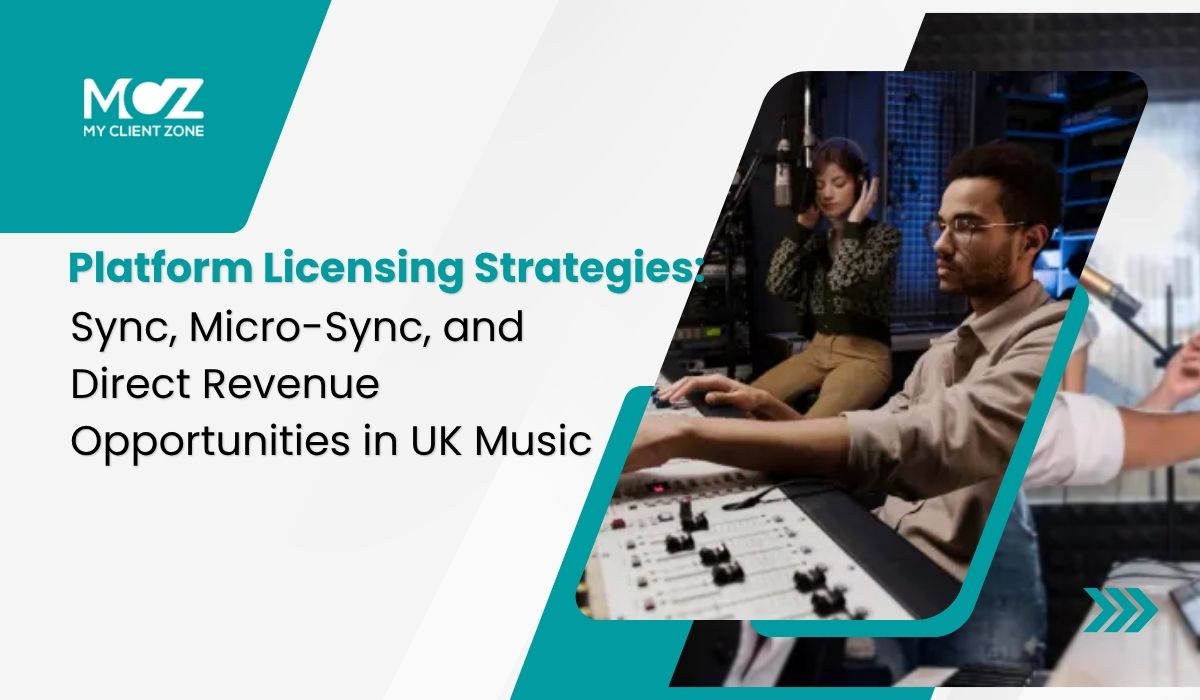The UK music industry is in the middle of a transformation. With streaming, social media, and digital platforms shaping how music is consumed, licensing has become more than just a legal checkbox. It’s now a strategic revenue driver. Artists are no longer solely dependent on record deals or radio play. Instead, sync licensing, micro-sync, and direct revenue channels are empowering independent musicians to take control of their earnings.
If you’re searching for a music distribution service in the UK or exploring a reliable music distribution platform in the UK, understanding these strategies could be the game-changer you need.

Why Licensing Matters More Than Ever
Let’s pause and reflect. The UK recorded music market was valued at £1.3 billion in 2023 (BPI), with licensing revenues accounting for a significant share. Sync deals, once reserved for established names, are now accessible to rising talents thanks to digital-first platforms.
Licensing isn’t just about money; it’s about exposure. One sync placement in a Netflix series or a TikTok clip can spark millions of new streams overnight. In fact, 67% of UK Gen Z listeners discover new music via social media and streaming platforms. That means your song could reach audiences you didn’t even know existed.
The Three Pillars of Modern Licensing
1. Sync Licensing – Big Moments, Bigger Exposure
Sync licensing is when your music is “synchronised” with visual media – think TV shows, films, commercials, or video games.
• The global sync market generated $640 million in 2022 (IFPI), with the UK contributing significantly.
• Brands are hungry for authentic tracks that connect with younger audiences, and indie artists often have the edge here: freshness, relatability, and affordability.
A sync deal doesn’t just pay upfront; it often creates a ripple effect of streams, downloads, and followers. Think of it as your music stepping into the spotlight of mainstream culture.
2. Micro-Sync – The Unsung Hero of Digital Growth
Micro-sync is licensing for smaller-scale digital content, like YouTube videos, Instagram reels, and TikTok posts. While fees are modest, the reach is massive.
Consider this: Over 1 billion TikTok users worldwide consume micro-sync content daily. For UK artists, this is a golden opportunity. A track featured in a trending video can snowball into viral fame. Micro-sync is the grassroots hustle of licensing, small wins that stack up into big results.
3. Direct Revenue Streams – Taking Ownership of Your Art
Beyond syncs, direct monetisation channels such as Bandcamp, Patreon, and even blockchain-based royalties allow artists to earn directly from their fan base.
This direct connection removes the middleman, giving creators higher margins and more control. Pair this with a robust music distribution service in the UK, and you’re not only collecting royalties from streams but also building a loyal community that sustains you long-term.
The Artist’s Dilemma: Exposure vs Earnings
It’s not easy being an independent artist today. Many struggle with the balancing act of “getting heard” and “getting paid.” Sync and micro-sync promise visibility, while direct revenue ensures sustainability. The challenge is knowing how to combine all three strategies.
This is where choosing the right music distribution platform in the UK becomes crucial. A smart platform doesn’t just push your tracks to Spotify or Apple Music but helps you tap into sync opportunities, manage micro-sync licensing, and streamline royalty collection.
Building a Licensing Strategy That Works
Here’s how independent musicians in the UK can start shaping a licensing plan that balances exposure with financial stability:
• Diversify: Don’t rely on one licensing type. Sync, micro-sync, and direct revenue should work together like gears in a machine.
• Leverage Platforms: Use distribution services that connect you with sync libraries and monetisation tools.
• Stay Informed: Understand the terms of your licensing agreements and protect your rights while maximising income.
• Invest in Branding: Your music isn’t just a product; it’s a story. The stronger the brand, the more appealing you are for sync placements.
The Role of Music Distribution Platforms
Behind every successful licensing strategy lies a distribution backbone. A well-chosen music distribution service in the UK ensures that your tracks are available on streaming platforms, registered for royalty collection, and pitched for sync opportunities.
Unlike traditional labels, modern platforms provide transparent data on streams, demographics, and earnings. This transparency helps you make informed decisions about where to focus your energy, whether that’s pitching for syncs or doubling down on fan-driven revenue.
Conclusion: Turning Sound into Strategy
The UK music scene is buzzing with opportunity. Sync licensing gives you the spotlight, micro-sync builds your digital presence, and direct revenue ensures long-term sustainability. The magic happens when these strategies are combined thoughtfully.
At the heart of it all lies a reliable music distribution platform in the UK, enabling artists to navigate this evolving landscape with confidence. Licensing is no longer a privilege of the few; it’s a strategy for every musician ready to take their sound global.
So, the question isn’t if you should embrace sync, micro-sync, and direct revenue – it’s when. And the best time? Right now.
